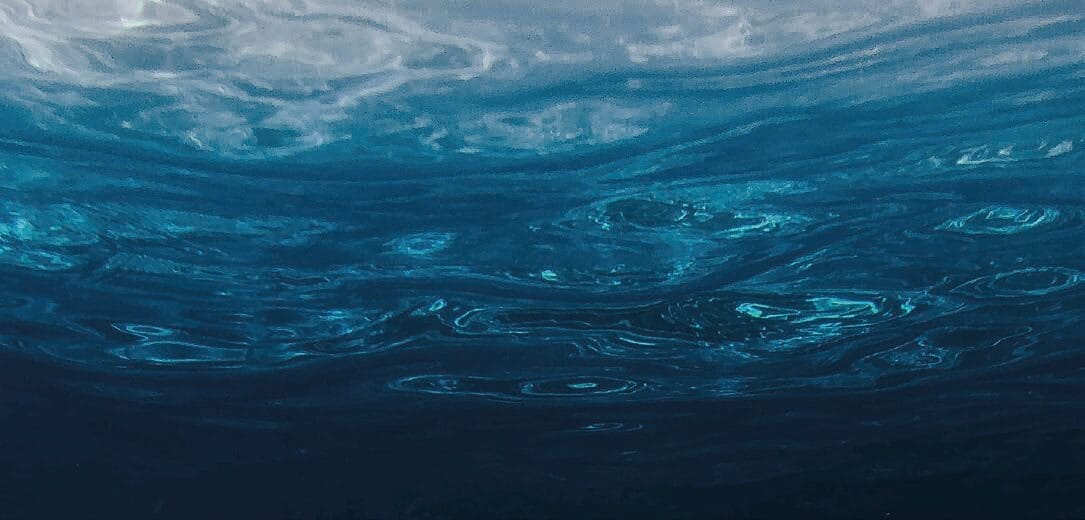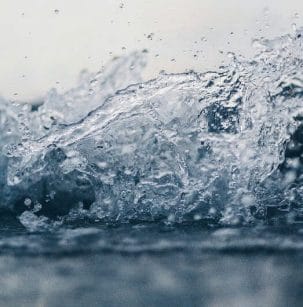
Author’s Note:
There is not enough water to go around. Today this is true for hundreds of thousands if not billions of people (depending on the data source you consult). The reality of water scarcity and the slightly less terrifying condition of water stress is changing the way industries like ours choose to use water. And just to be clear, water scarcity, according to the United Nations, means that given the available “supply or quality of water, … demand … cannot be satisfied fully.” (italics are mine).
The reality is that if we don’t choose to use water more carefully, most areas of the world will eventually face conditions of water scarcity – and these are conditions that don’t impact only people but also animals and the natural environment.
So here we are, reimagining how beauty makers and beauty consumers use water.
Water-Wise Ingredient Production and Product Manufacturing
Every beauty industry supplier and product manufacturer that I know of is actively taking steps toward more environmentally sustainable operations. And more often than not, limiting water use as well as eliminating water waste and contamination is among a company’s sustainability efforts.
For instance, Croda, an international specialty chemical company headquartered in England with annual revenue upward of $2bn, calls “water stewardship … one of the core sustainability fundamentals.”
Please do note that every product and process mentioned in this article recognizes and reveres the value of water. As do countless other approaches that our industry is employing to limit water use, water contamination, and water waste.
“We are committed to … responsible management of our water consumption and waste production. By 2030, we will reduce our water use impact by 50% from our 2018 level,” writes Marketing Coordinator Christina Richardson in a company blog post about water-conscious beauty.
And a 2022 article called Water sustainability: A waterless life cycle for cosmetic products, published in the journal of Sustainable Production and Consumption does a nice job of outlining the ways in which ingredient and product manufacturers are choosing to use water differently.
The authors (Joana B. Aguiar, Ana M. Martins, Cristina Almeida, Helena M. Ribeiro, Joana Marto) all from the Research Institute for Medicine at the University de Lisbon in Portugal, recognize that not only is water “one of the main ingredients in a cosmetics formulation, it is required to grow raw materials and for heating and cooling processes, equipment cleaning, and packaging production.” Throughout the article, they call attention to efficiencies in production that can lessen water use, water waste, and water contamination.

But beyond all of that, existing and emerging technologies – some particular to the cosmetics and personal care industry, others with applications across multiple industries – seem to have great promise in our quest to avoid global water scarcity.
AquaSteady, for instance, is a technology that can be used to help soil impacted by drought remain hydrated and able to absorb rain water when it does come. AquaSteady “balances soil moisture. It’s a hydrogel; and it’s made from seaweed,” explains Cindie Kehlet, in a YouTube piece produced by the US National Science Foundation. Kehlet is a Professor of Math and Science at Pratt Institute, and a member of the cross-disciplinary team that developed AquaSteady. The bio-degradable soil additive, “absorbs water from soil when it’s wet and gradually returns it when the soil dries,” explains the video’s description text. The hydrogel itself is made from sustainably farmed kelp.
While we’re on the subject of kelp, the same sort of aquaculture (that is farming in or under water) used to grow kelp for the AquaSteady project is also being used by a new beauty ingredient maker called Macro Oceans. If you read my weekly Beauty Insights newsletter, you already know that Macro Oceans launched a first ingredient late last year called Hydrating Marine Polysaccharide.
The US-based biotech research company “works with local seaweed farming families in the Kodiak community of Alaska. Each November farmers seed their plots with ropes (which act as furrows do in land-based farming), ropes dotted with seaweed sporophytes. The seaweed is cultivated within 12 feet of the water surface; but because of what’s known as the Alaska Current (the direction and speed of water flow around the Gulf of Alaska) it is feed by deep-water nutrients. Come spring, the crop grows quickly, capturing carbon though natural photosynthesis. Harvest can begin in late April and is complete by the end of May. To oversimplify it, harvest means pulling in the ropes and the attached seaweed. From there, the team at Macro Oceans processes everything, as [Founder and CEO Matthew Perkins] tells me. This is where intentional zero-waste ingredient production comes in. The team is valorizing every bit of the seaweed,” to quote from my own Beauty Insights coverage of the company’s ingredient launch.
Perkins calls his company’s aquaculture approach a “new model of regenerative ocean agriculture” and takes pride in how mindful this sourcing method is of the overall impact that it has, or rather doesn’t have on the ecosystem.

Consumer brands are helping the industry rethink water use as it pertains to sourcing too. Nopalera is a prime example. The brand, founded in 2020 by Sandra Velasquez, takes its name from its hero ingredient: prickly pear cactus (Nopal). As Velazquez pointed out in a recent social media post, Nopal “grows in any climate, … regenerates in weeks” after cactus pads are cut off or harvested, and has been called “the ‘crop of the future’ for its drought resistance” by the United Nations.
High tech (practical applications of electronics, computers, machines, and the like) can also help us. Digital Twins or Digital Proxys of the bioreactors used for cell and micro-organism cultivation, for instance, can improve efficiency (and reduce water waste) in smart manufacturing.
And other process-monitoring technologies could prove useful as well. Once example being used in the food sector is in-line rheology monitoring. A Sweden-based company founded in 2017 called Incipientus “develops and sells non-invasive, clamp-on pulsed ultrasound based in-line fluid characterization systems for flow visualization, process monitoring and control of opaque, non-Newtonian industrial liquids.” This according to the company About statement on LinkedIn. The technology helps “troubleshoot product failure” and has applications in chocolate, ketchup, mayonnaise, and yoghurt production. Technology transfer between food and beauty is not uncommon; and I fully expect to see Incipientus tech to make its way into our industry before long.
Water by Any Other Name
A sense of consumer cynicism exists around the fact that “‘the first ingredient is water” in many conventional product formulations. The practical concerns here are likely about efficacy and sustainability, which is why brands and manufacturers are choosing to formulate with water alternatives.
Ingredients that are water but not only water can be quite compelling. Hinoki Cypress water, for example, has been a desirable ingredient in Japan and Korea for years. And brands like I-zézé feature it as a hero ingredient; that K-beauty skincare brand has a line of products called Anyone that are formulated with 80% Hinoki Cypress water. It’s the first ingredient, but it’s not just water. It’s a water that has a sustainable sourcing story; the water is drawn from living trees without, as I am told, “disrupting the trees’ basic lifecycle.” And it’s water that promises skincare benefits and helps create a distinctive product feel.
In January, chemical maker Groupe Berkem introduced two new plant waters to its line of H2OLIXIR ingredients: Lavender Water and Thyme Water. These ingredients are, in some ways, similar to Hinoki Cypress water. They are water, but not just water; they also have been shown to have particular skincare benefits. According to the company’s press release, “Lavender Water features a soothing and antioxidant action that reduces discomfort, its properties can be used in a wide range of cosmetic applications, such as facial care and sensitive skincare, soothing skincare and the fight against premature skin aging.” While “Thyme Water [provides] a wide range of benefits, from its antioxidant action to its purifying properties, it is used in facial care for combination, oily or acne-prone skin, as a purifying cleanser or as a repairing facial treatment and also purifies oily hair and cleanses the scalp.”
Sustainable ingredient maker ROELMI HPC has a line of biologically active waters sourced from fruit. The CytoFruit Waters are upcycled really and sourced in partnership with a company that produces juices and concentrates, using only physical production methods. The upcycled cosmetic ingredients are rich in phytochemicals and antioxidants. And – as with many water alternatives in the beauty ingredient marketplace – CytoFruit Waters have waterless INCI names. As an example, CytoFruit® Water
Bergamot Bio 99% shows up on an ingredient list as Citrus Aurantium Bergamia Fruit Extract, Potassium Sorbate. This particular ingredient is used for toning or a cooling effect and also “exhibits good dermo-mimetic ability and high protective effect against pollution, oxidation and UV rays,” according to company materials, so it is also used in after-sun product formulations.
And pundits on both the consumer and supply sides of beauty are calling 2024 the year of hair waters. These hair treatment products are water-like but not water. This trend isn’t about less water in formulations but rather about the appeal of water’s elegant simplicity and its status as a vital nutrient.
“Hair waters work with a lamellar technology,” writes Christine Meier of Mibelle Biochemistry in a trend post on the ingredient maker’s site. “Lamellar waters,” she explains, “take their name from the scientific term ‘lamella’, which refers to a thin layer.”
“Once in contact with the water from wet hair, the formula ‘hugs’ the hair fiber. Like magnets, the lamelles are positively charged and attracted to negatively charged, damaged areas of the hair, meaning they deliver the conditioning amino acids and lipids exactly where they need to be, rather than coating the entire hair shaft with heavy conditioning agents.”
Popular examples of hair waters include The One Signature Hair Water from Kristin Ess Hair (owned by private label manufacturer Maesa) and Sleek & Shine Glass Hair Water (from L’Oréal’s Garnier brand).
Liquid-Less Cosmetic and Personal Care Product Formats
Waterless product formats continue to evolve and find popularity with consumers. The majority of waterless products – be they sheets or pills or tablets or powders or concentrates – do, of course, require water during application.
The Gentle Foaming Cleanser + Concentrate from Neutrogena is an example that’s been getting a lot of attention lately, namely for its powder-to-foam formula. (Neutrogena is owned by Kenvue, a fully independent company which was until late last year the Consumer Healthcare division of Johnson & Johnson.)
There are some exceptions to the just-add-water approach to waterless beauty; many of the skincare and body care products from Kate McCloud are both formulated and used without water. You may be familiar with her original product, the Body Stone lotion bar.
And the Bloom Jelly Serum Bar from DewMty (Dew Mighty) is another example of skincare that is both made without and applied without any water. Which leads us into another water-conscious beauty concept: products that help consumers use less water. Here the dry-apply shave gels from H2NO Shave are a good example. The lubricating shave gel does not need to be activated or lathered up with water, nor does it need to be rinsed off. It does help to have a bit of water for rinsing the razor over the course of a shave, but that requires significantly less water than a shave done in the shower.
The Luxury of Water
It’s not uncommon for mineral water or thermal water to be the hero ingredient of a beauty product or product line. Brands like La Roche-Posay and Blue Lagoon Iceland illustrate this nicely.
Additionally, water alone is a beauty product. La Roche-Posay sells a Thermal Spring Water for Sensitive Skin that has a one-word ingredient list. Vichy Volcanic Water has the same one-word ingredient list. Evian’s Natural Mineral Water Facial Spray fits in here too with Evian Water and Nitrogen on its ingredient list. While the Grape Water Moisturizing Face Mist from Caudalíe recalls the water alternatives we saw from ingredient makers earlier in this article; the ingredient list here comprises Vitis Vinifera (Grape) Fruit Water, Vitis Vinifera (Grape) Juice, and Nitrogen.
In recent years, I have seen a number of at-home water filtering devices introduced to the consumer market expressly for use with waterless cosmetic and personal care products or for the claimed benefits of the filtered water itself.

At the end of 2021 a business called Jolie launched The Filtered Showerhead. “We believe that beauty starts with clean water,” explains the ecommerce site. “The Jolie Filtered Showerhead removes chlorine, heavy metals and other contaminants from your shower water – to improve your skin, hair and wellbeing.”
Qure makes a filter for the sink faucet, promising acne care benefits. The device “Filters your faucet tap water for the most purified cleanse. Aids in removing known skin irritants like chlorine, calcium and magnesium. Improve skin barrier for healthier skin without any extra steps in your routine,” according to their site.
A popular filter lately is Filterbaby, which call itself the “world’s first water filter created for skincare.” This brand makes similar promises to those that Jolie and Qure are making. Filterbaby marketing copy states that, “Our proprietary formulation surpasses all
other faucet filters by efficiently reducing 99.9% of Chlorine and Chloramine in tap water, making washing your face feels so so good.”
And if you’re interested in more ways that water can be improved for beauty benefits, please look back at my previous Global Perspectives column in the December issue 2023 of EURO COSMETICS Magazine, called 5 Companies Transforming Beauty with the Science of Tomorrow. There you can learn about Hydrosome H2O.
An Industry at the Water’s Edge
Water is all around us. And yet, there is not enough water to go around. Nearly all of the products and processes that I covered here use water; and certainly the people behind all of those products and processes use water. In fact, that’s the point: we all need water.
But alleviating water scarcity is not about avoiding water. It is about appreciating water and helping to ensure that the quality and availability of water can meet the needs of all the creatures and plants and phenomena within Earth’s biosphere.

Deanna Utroske
Deanna Utroske is Editor of the weekly Beauty Insights newsletter and one of the most well-respected critical thinkers in the cosmetics and personal care industry today. She serves our industry as a public speaker, writer, and consultant for supply-side companies.
As a regular contributor to this publication, Deanna writes the Global Perspectives column, covering cosmetic and personal care product formulation trends, emerging ingredient science, and ingredient marketing trends impacting the future of beauty around the world.
As a public speaker, Deanna addresses company teams, higher-education classrooms, and event audiences. She’s spoken at Cosmoprof Worldwide Bologna, in-cosmetics global, MakeUp in Los Angeles, NYSCC Suppliers Day, the Anti-Ageing Skin Care Conference, the International Cosmetics Innovation Conference, Cosmoprof North America, the AIRS International Conference on Genomics & Microbiomics, and many others.
Learn more and find a link to subscribe to the Beauty Insights newsletter at www.DeannaUtroske.com



